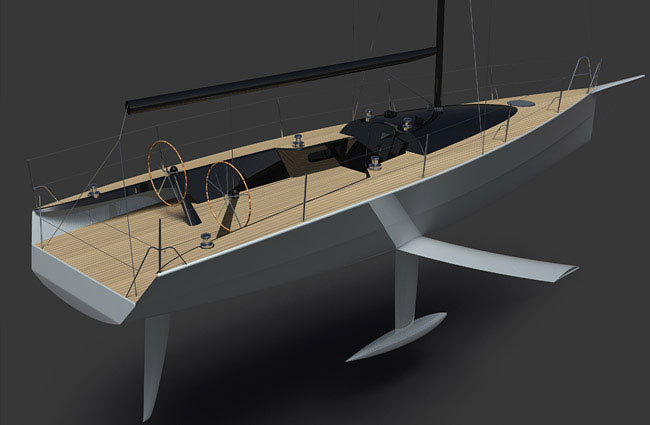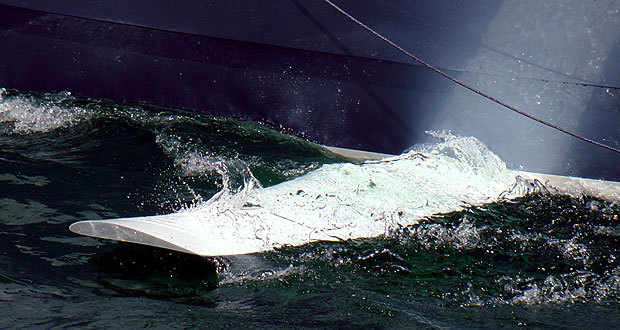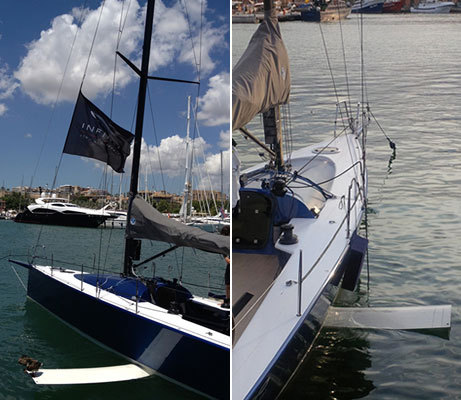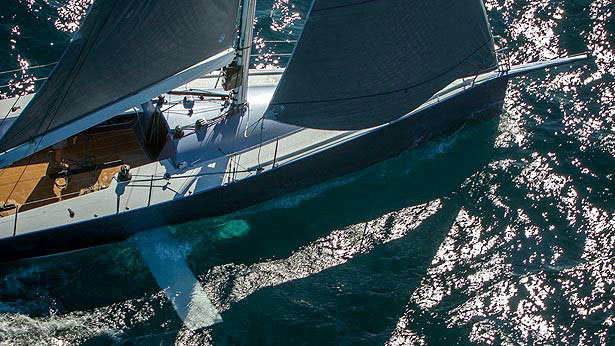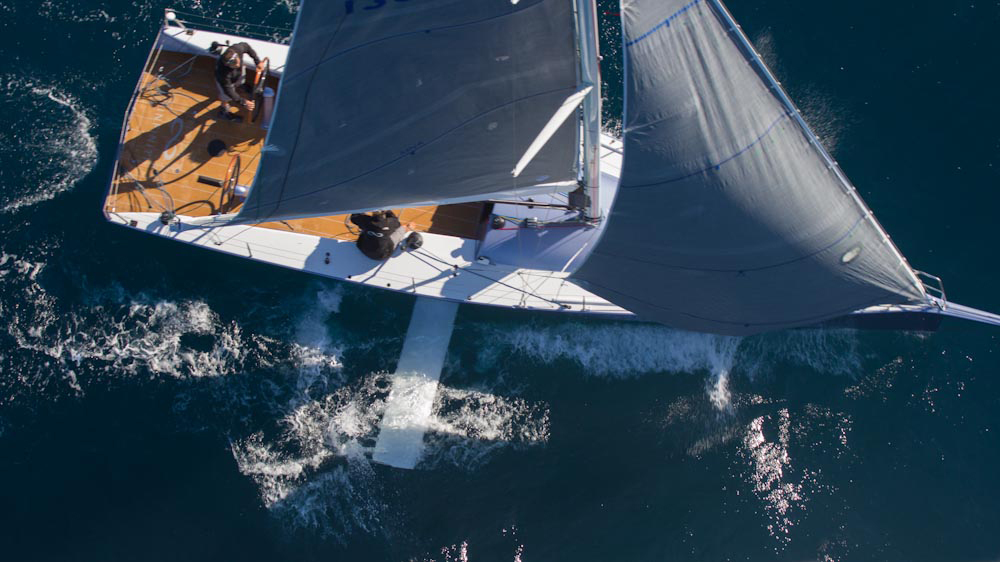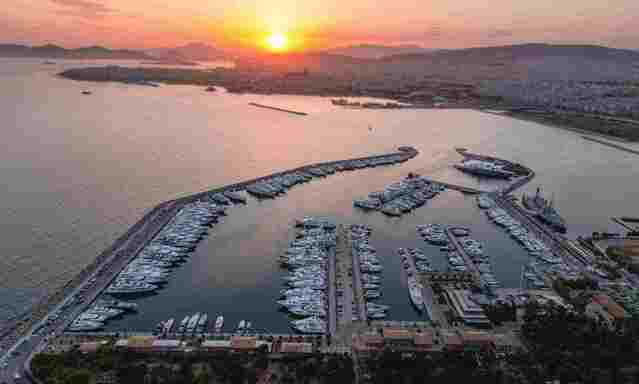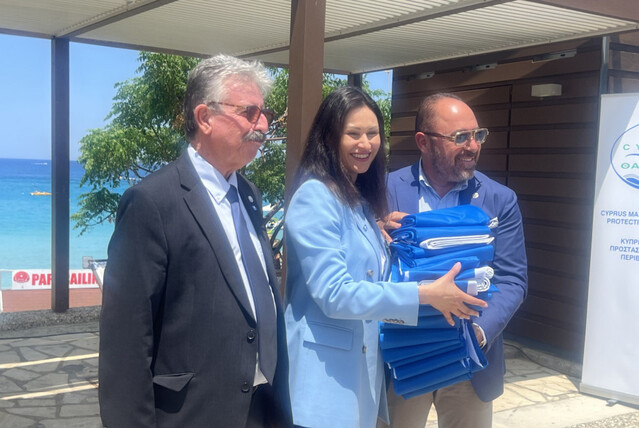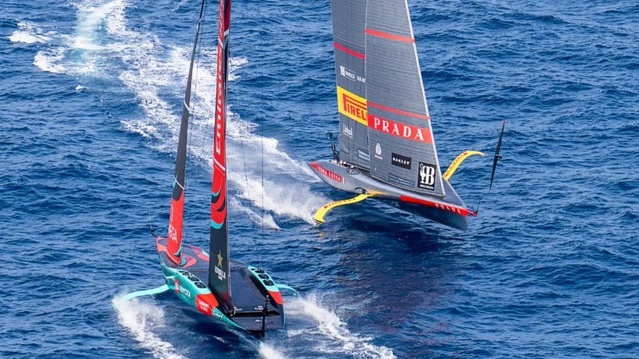Dynamic Stability Systems, or DSS, delivers revolutionary innovation to the sailing world. It is the acronym on everyone’s lips at the moment. To understand the Dynamic Stability System (DSS), think of the aspects of a monohull that keep it upright: the keel and its bulb, obviously, and the hull shape or ‘hull form stability’, paricularly in yachts with wider, more powerful hulls. DSS introduces an extra element: a horizontal asymmetric foil that passes laterally through the boat at the waterline, providing upward force to leeward. This foil has a shallow curve, its ends pointing upwards slightly, and is retractable, so it can be tacked during manoeuvres. Simplicity is the key here, and it offers huge increases in righting moment without the complications of a canting keel or water ballast. Speed, comfort and easy handling: these are big gains from such a basic installation that impacts little on a boat’s interior.
At the heart of DSS development is UK-based designer Hugh Welbourn, engineer Will Brooks and professional sailor Gordon Kay. This is not just a recent idea – they’ve been working on the concept for the last decade and with a number of prototypes now validating their predictions, have patented the technology. DSS is also venturing into the Superyacht arena by way of Infiniti Yachts, who debuted at the Monaco Yacht show with a range of yachts sporting the system. DSS is legal under IRC, ORC and PHRF handicapping systems.
How it works
The most significant benefit of DSS is stability. The foil produces an upwards force at a point well to leeward of the hull, helping to keep the boat more upright. It’s just like having a small outrigger, however the size of this force varies with speed (it is ‘dynamic’). The faster you go, the more upwards lift and therefore stability you get. It doesn’t take a genius to realise this has huge potential. As the boat accelerates, it becomes more level, the sails can be sheeted in and you can sail at a tighter angle. The challenge then comes in maintaining that speed, which means sailing in a slightly different way. The rewards from getting it right, however, make this very worthwhile.
The second major advantage is motion reduction. Heave (up and down), roll and pitch are all dampened, making for a smoother ride. Less motion results in a more stable flow over the sails and appendages, increasing their efficiency. The end result is that fewer of the crew will get seasick while reaching their destination in a much shorter time, a true win for those with a sensitive belly.
Hugh Welbourn comments: “There appears to be no particular size limitations either using the system – we have run analyses from small boats right up to 190ft and physical scale effects are very much working in favour of DSS. For example we thoroughly investigated a 150ft high performance design and the result has a single masted rig of still quite manageable proportions on an overall displacement of just on 40,000 kg…
“We are seeing speed increases of well over 25% when retrofitting the system on a conventional fixed keel yacht and on a DSS yacht where the system is integral to the design, we are seeing increases of 40%+”.
What inspired this unique concept?
Hugh Welbourn: “I had been thinking about how to make boats lighter and faster. In effect I was looking at the canting keels and the benefits and downsides of those systems that led me to reverse my thinking and make the obvious connection.
However, there were many potential downsides, so the idea sat on the back burner for a couple of years, but never really went away. Some other work I was doing in the GBR America' Cup campaign made me rethink some aspects of the idea. Then after the BOLS Super Maxi program, we began the R & D process in earnest”.
| Cyprus Yachting Articles - More Articles... |
|
|






